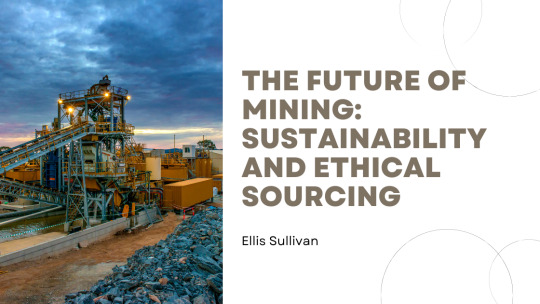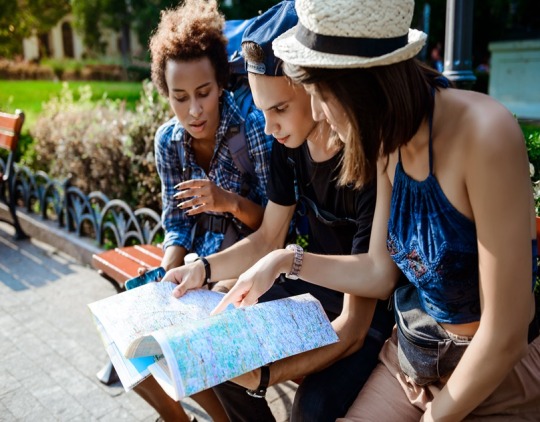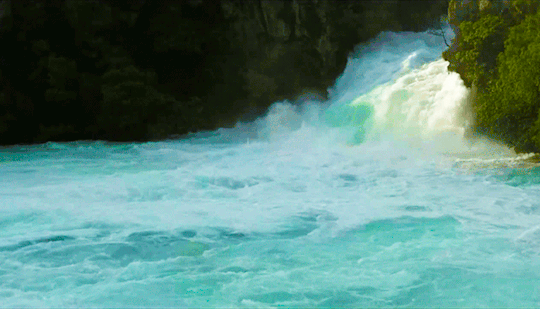#Data Stewardship Practices
Explore tagged Tumblr posts
Text
Mastering Microsoft Purview Workflow: Revolutionize Your Data Governance
Dive into the world of Microsoft Purview Workflow, a key to mastering data governance. Learn how it automates data integrity, compliance, and collaboration, revolutionizing your organization's data management practices for unparalleled efficiency and sec

View On WordPress
#Asset Attribute Management#Audit Trail Documentation#Automated Data Validation#Change Management Processes#Compliance Strategies#Data Asset Updates#Data Cataloging Techniques#Data Governance#Data Integrity Assurance#Data Management Policies#Data Quality Management#Data Stewardship Practices#Data Update Escalation#Metadata Management#Microsoft Purview#Organizational Efficiency#Regulatory Compliance#Stakeholder Notification Systems#Workflow Automation
0 notes
Text
Data Governance Best Practices: Ensuring Data Quality and Security.
Sanjay Kumar Mohindroo Sanjay Kumar Mohindroo. skm.stayingalive.in Discover how data governance shapes business success. Real stories, best practices, and debate on data quality and security. A Call to See Data Differently Data is everywhere. We collect it, store it, and analyze it. Yet, many companies struggle to protect it or even make sense of it. Data can be your greatest ally if you…
#Data Audit#Data Compliance#Data Culture#Data Dictionary#data governance#Data Lineage#Data Management Best Practices#Data Ownership#Data Protection#Data Quality#Data Security#Data Stewardship#Data Stewardship Team#Data Trust#Data-Driven Decisions#News#Sanjay Kumar Mohindroo
0 notes
Text
Interior Department Announces New Guidance to Honor and Elevate Hawaiian Language

"In commemoration of Mahina ʻŌlelo Hawaiʻi, or Hawaiian Language Month, and in recognition of its unique relationship with the Native Hawaiian Community, the Department of the Interior today announced new guidance on the use of the Hawaiian language.
A comprehensive new Departmental Manual chapter underscores the Department’s commitment to further integrating Indigenous Knowledge and cultural practices into conservation stewardship.
“Prioritizing the preservation of the Hawaiian language and culture and elevating Indigenous Knowledge is central to the Biden-Harris administration's work to meet the unique needs of the Native Hawaiian Community,” said Secretary Deb Haaland. “As we deploy historic resources to Hawaiʻi from President Biden’s Investing in America agenda, the Interior Department is committed to ensuring our internal policies and communications use accurate language and data."
Department bureaus and offices that engage in communication with the Native Hawaiian Community or produce documentation addressing places, resources, actions or interests in Hawaiʻi will use the new guidance on ‘ōlelo Hawaiʻi (Hawaiian language) for various identifications and references, including flora and fauna, cultural sites, geographic place names, and government units within the state. The guidance recognizes the evolving nature of ‘ōlelo Hawaiʻi and acknowledges the absence of a single authoritative source. While the Hawaiian Dictionary (Pukui & Elbert 2003) is designated as the baseline standard for non-geographic words and place names, Department bureaus and offices are encouraged to consult other standard works, as well as the Board on Geographic Names database.
Developed collaboratively and informed by ʻōlelo Hawaiʻi practitioners, instructors and advocates, the new guidance emerged from virtual consultation sessions and public comment in 2023 with the Native Hawaiian Community.
The new guidance aligns with the Biden-Harris administration’s commitment to strengthening relationships with the Native Hawaiian Community through efforts such as the Kapapahuliau Climate Resilience Program and Hawaiian Forest Bird Keystone Initiative. During her trip to Hawaiʻi in June, Secretary Haaland emphasized recognizing and including Indigenous Knowledge, promoting co-stewardship, protecting sacred sites, and recommitting to meaningful and robust consultation with the Native Hawaiian Community."
-via US Department of the Interior press release, February 1, 2024
--
Note: I'm an editor so I have no idea whether this comes off like as big a deal as it potentially is. But it is potentially going to establish and massively accelerate the adoption of correctly written Native Hawaiian language, as determined by Native Hawaiians.
Basically US government communications, documentations, and "style guides" (sets of rules to follow about how to write/format/publish something, etc.) can be incredibly influential, especially for topics where there isn't much other official guidance. This rule means that all government documents that mention Hawai'i, places in Hawai'i, Hawaiian plants and animals, etc. will have to be written the way Native Hawaiians say it should be written, and the correct way of writing Hawaiian conveys a lot more information about how the words are pronounced, too, which could spread correct pronunciations more widely.
It also means that, as far as the US government is concerned, this is The Correct Way to Write the Hawaiian Language. Which, as an editor who just read the guidance document, is super important. That's because you need the 'okina (' in words) and kahakō in order to tell apart sizeable sets of different words, because Hawaiian uses so many fewer consonants, they need more of other types of different sounds.
And the US government official policy on how to write Hawaiian is exactly what editors, publishers, newspapers, and magazines are going to look at, sooner or later, because it's what style guides are looking at. Style guides are the official various sets of rules that books/publications follow; they're also incredibly detailed - the one used for almost all book publishing, for example, the Chicago Manual of Style (CMoS), is over a thousand pages long.
One of the things that CMoS does is tell you the basic rules of and what specialist further sources they think you should use for writing different languages. They have a whole chapter dedicated to this. It's not that impressive on non-European languages yet, but we're due for a new edition (the 18th) of CMoS in the next oh two to four years, probably? Actually numbering wise they'd be due for one this year, except presumably they would've announced it by now if that was the case.
I'm expecting one of the biggest revisions to the 18th edition to add much more comprehensive guidance on non-Western languages. Considering how far we've come since 2017, when the last one was released, I'll be judging the shit out of them if they do otherwise. (And CMoS actually keep with the times decently enough.)
Which means, as long as there's at least a year or two for these new rules/spellings/orthographies to establish themselves before the next edition comes out, it's likely that just about every (legit) publisher will start using the new rules/spellings/orthographies.
And of course, it would expand much further from there.
#don't ask me about the magazine and newspaper half of this#bc I do Not know AP style#except the differences I'm annoyed at lol#ap doesn't respect the oxford comma#hawaii#hawaiʻi#language#orthography#linguistics#language stuff#hawaiian#native hawaiian#united states#publishing#book publishing#indigenous#indigineous people#indigenous languages#language revitalization#language resources#editorial
425 notes
·
View notes
Text
Excerpt from this New York Times story:
Organic farmers and environmental groups sued the Agriculture Department on Monday over its scrubbing of references to climate change from its website.
The department had ordered staff to take down pages focused on climate change on Jan. 30, according to the suit, which was filed in the United States District Court for the Southern District of New York. Within hours, it said, information started disappearing.
That included websites containing data sets, interactive tools and funding information that farmers and researchers relied on for planning and adaptation projects, according to the lawsuit.
At the same time, the department also froze funding that had been promised to businesses and nonprofits through conservation and climate programs. The purge then “removed critical information about these programs from the public record, denying farmers access to resources they need to advocate for funds they are owed,” it said.
The Agriculture Department referred questions about the lawsuit to the Justice Department, which did not immediately respond to a request for comment.
The suit was filed by lawyers from Earthjustice, based in San Francisco, and the Knight First Amendment Institute at Columbia University, on behalf of the Northeast Organic Farming Association of New York, based in Binghamton; the Natural Resources Defense Council, based in New York; and the Environmental Working Group, based in Washington. The latter two groups relied on the department website for their research and advocacy, the lawsuit said.
Peter Lehner, a lawyer for Earthjustice, said the pages being purged were crucial for farmers facing risks linked to climate change, including heat waves, droughts, floods, extreme weather and wildfires. The websites had contained information about how to mitigate dangers and adopt new agricultural techniques and strategies. Long-term weather data and trends are valuable in the agriculture industry for planning, research and business strategy.
“You can purge a website of the words climate change, but that doesn’t mean climate change goes away,” Mr. Lehner said.
The sites under the department’s umbrella include those of the Forest Service, which is responsible for stewardship of forests and grasslands; the Natural Resources Conservation Service, which helps landowners implement conservation practices; and those of other divisions focused on farms and ranches, disaster recovery and rural development.
The directive to delete the pages came by email from Peter Rhee, the department’s director of digital communications, according to the lawsuit.
The plaintiffs allege the actions violated three federal laws and were “arbitrary, capricious, an abuse of discretion, or otherwise not in accordance with law.” They asked the court to compel the agency to restore the pages and to block it from deleting any others.
Wes Gillingham, president of the board of Northeast Organic Farming Association of New York, said that farmers were just heading into planning for the summer growing season. He said taking information down because of a “political agenda about climate change” was senseless.
9 notes
·
View notes
Text
Things to script - nature or status of realities
This is something I recently started inputting into my DRs to make them better and safe. I got much help from ChatGPT too to categorize all these things. I wanted to share it with you guys too :) feel free to use anything for your scripts. Happy Shifting!!!
All of the below discriminations does not exist in any of my DRs
Misogyny
Racism
Homophobia
Transphobia
Classism
Ableism
Ageism
Xenophobia
Islamophobia
Anti-Semitism
Colorism
Nationalism
Casteism
Environmental injustice
Sexism
Sizeism
Religious discrimination
Ethnic discrimination
Discrimination based on immigration status
Discrimination based on language
Discrimination based on nationality
Discrimination based on indigenous status
Discrimination based on political beliefs
Discrimination based on marital status
Discrimination based on parental status
Discrimination based on veteran status
Discrimination based on HIV/AIDS status
Discrimination based on neurodiversity
Discrimination based on mental health status
Discrimination based on physical appearance
Discrimination based on cultural practices
Discrimination based on regional or geographical origin
Discrimination based on caste or social status
Discrimination based on educational background
Discrimination based on housing status
Discrimination based on criminal record
Discrimination based on economic status
Discrimination based on access to healthcare
Discrimination based on access to education
Discrimination based on access to employment opportunities
All of the below issues have been solved many years ago and they do not exist in the times of any of my DRs
Poverty
Economic inequality
Environmental degradation
Climate change
Pollution
Deforestation
Political instability
Armed conflicts
Civil wars
Humanitarian crises
Global health challenges
Infectious diseases
Pandemics
Inadequate healthcare systems
Lack of access to essential medicines
Educational disparities
Limited access to quality education
Illiteracy
Child labor
Child marriage
Gender inequality
Women's rights violations
Child labor
Human trafficking
Forced labor
Modern slavery
Corruption
Lack of transparency
Ineffective governance
Authoritarian regimes
Suppression of free speech
Violations of human rights
Arbitrary detention
Torture
Persecution
Indigenous rights violations
Land grabs
Cultural appropriation
Technological and digital divides
Ethical dilemmas in technology
Privacy concerns
Data breaches
Cybersecurity threats
Food insecurity
Malnutrition
Water scarcity
Access to clean water
Sanitation issues
Homelessness
Housing affordability
Urbanization challenges
Aging population
Elder abuse
Mental health stigma
Lack of access to mental health services
Substance abuse
Addiction
Disability rights violations
Accessibility barriers
Stigmatization of disabilities
LGBTQ+ rights violations
Discrimination based on sexual orientation
Discrimination based on gender identity
Family rejection
Reproductive rights violations
Access to reproductive healthcare
Maternal mortality
Child mortality
Access to clean energy
Energy poverty
Fossil fuel dependence
Renewable energy transition challenges
Wildlife conservation
Endangered species protection
Animal rights violations
All the DRs I shift to are abundant of the following things
Compassion
Empathy
Cooperation
Collaboration
Sustainability
Environmental stewardship
Peacebuilding
Conflict resolution
Dialogue
Reconciliation
Education
Knowledge-sharing
Critical thinking
Cultural diversity
Cultural respect
Inclusivity
Equality
Justice
Ethical leadership
Integrity
Accountability
Service to others
Health promotion
Well-being
Healthcare access
Mental health support
Social support systems
Innovation
Creativity
Social justice
Fairness
Equity
Human rights
Freedom of expression
Freedom of assembly
Democratic governance
Rule of law
Transparency
Accountability mechanisms
Community empowerment
Grassroots activism
Civic engagement
Volunteerism
Philanthropy
Sustainable development
Responsible consumption
Renewable energy adoption
Conservation
Biodiversity protection
Animal welfare
Gender equality
Women's empowerment
LGBTQ+ rights
Disability rights
Indigenous rights
Racial equity
Anti-discrimination policies
Social welfare programs
Poverty alleviation
Economic empowerment
Access to education
Access to clean water
Sanitation infrastructure
Housing rights
Food security
Global cooperation
International aid and development
Humanitarian assistance
Conflict prevention
Diplomacy
Multilateralism
Solidarity
Tolerance
Forgiveness
Resilience
All of the DRs I shift into are currently successfully overcoming the following challenges as they rise
Sustaining Progress: Maintaining the momentum of positive change and preventing regression into previous discriminatory attitudes and practices.
Ensuring Equity: Addressing lingering disparities and ensuring that the benefits of progress are equitably distributed across all communities.
Adapting to Changing Circumstances: Remaining flexible and responsive to evolving societal needs, dynamics, and challenges over time.
Balancing Interests: Navigating competing interests, values, and priorities among diverse stakeholders in society.
Preventing Backlash: Mitigating potential backlash from individuals or groups who may resist or oppose efforts to eliminate discrimination and promote positive change.
Addressing Unforeseen Consequences: Anticipating and addressing unintended consequences or side effects of interventions aimed at addressing societal issues.
Managing Complexity: Dealing with the complexity of interconnected social, economic, political, and environmental systems, which may require interdisciplinary approaches and collaboration.
Maintaining Engagement: Sustaining public engagement, participation, and support for ongoing efforts to promote equality, justice, and well-being.
Ensuring Accountability: Holding individuals, institutions, and governments accountable for upholding principles of fairness, transparency, and ethical conduct.
Resisting Entrenched Power Structures: Challenging and dismantling entrenched power structures, systems of privilege, and institutionalized forms of discrimination.
Addressing Global Challenges: Collaborating internationally to address global challenges such as climate change, inequality, and conflict, which require coordinated action across borders.
Cultural Sensitivity: Respecting and accommodating diverse cultural norms, values, and perspectives while promoting universal principles of human rights and equality.
Managing Resources: Efficiently allocating resources and managing competing demands to sustain progress and address ongoing needs in society.
Promoting Inclusivity: Ensuring that marginalized or vulnerable groups are included in decision-making processes and benefit from positive changes in society.
Building Trust: Fostering trust, cooperation, and solidarity among individuals, communities, and institutions to sustain positive social transformation.
Addressing New Challenges: Remaining vigilant and adaptive to emerging challenges and threats to equality, justice, and well-being in an ever-changing world.
#reality shifting#desired reality#reality shift#shifting community#shifting motivation#shiftblr#shifting consciousness#shifters#shifting script#scripting
32 notes
·
View notes
Text
The Future of Mining: Sustainability and Ethical Sourcing

The mining industry is undergoing a profound transformation. As the global demand for raw materials like lithium, cobalt, and rare earth elements surges, driven by renewable energy technologies and electric vehicles, the emphasis on sustainability and ethical sourcing has never been more crucial. This shift is not just a moral imperative but a business necessity, with stakeholders demanding transparency and responsibility throughout the supply chain.
The Push for Sustainability in Mining
Mining has long been associated with significant environmental challenges, including habitat destruction, water contamination, and carbon emissions. However, modern technologies and innovative practices are paving the way for greener operations.
Renewable Energy Integration: Mining companies are increasingly adopting renewable energy sources such as solar and wind to power their operations. For instance, some mines in Chile and Australia now operate entirely on renewable energy, reducing their carbon footprint and operational costs.
Circular Economy Practices: Recycling metals from electronic waste and repurposing mining byproducts are becoming more common. These initiatives not only reduce the need for virgin material extraction but also address the issue of mining waste.
Water Management Innovations: Water is a critical resource in mining, often used in large quantities for processing minerals. Companies are investing in technologies to recycle water and reduce consumption, ensuring minimal impact on local communities and ecosystems.
Ethical Sourcing: A Growing Priority
Consumers and businesses alike are increasingly prioritizing ethically sourced materials. This trend has put pressure on the mining industry to ensure fair labor practices, community welfare, and environmental stewardship.
Fair Labor Practices: Reports of child labor and unsafe working conditions in some mining regions have raised global concerns. Ethical sourcing requires adherence to international labor standards and active monitoring of supply chains to prevent exploitation.
Community Engagement: Mining operations often disrupt local communities. Ethical sourcing involves consulting with and compensating affected populations, ensuring that mining benefits are shared equitably. Initiatives such as community-driven mining agreements are fostering collaboration and trust.
Transparency and Certification: Organizations like the Responsible Mining Initiative and Fairmined Certification are helping companies demonstrate their commitment to ethical practices. Blockchain technology is also being used to trace materials from mine to market, providing verifiable proof of ethical sourcing.
The Role of Innovation
Innovation is a cornerstone of the mining industry’s sustainable future. From automation and artificial intelligence to reduce waste and increase efficiency, to biotechnologies that use microbes to extract metals in a less invasive manner, the possibilities are vast. Additionally, partnerships with tech companies are helping mining firms harness data for better decision-making and improved sustainability outcomes.
Challenges and Opportunities Ahead
Despite these advancements, the path to sustainability and ethical sourcing in mining is not without challenges. High implementation costs, lack of regulatory frameworks in some regions, and the complexity of global supply chains are significant hurdles. However, these challenges also present opportunities for collaboration between governments, NGOs, and the private sector.
Conclusion
The future of mining lies at the intersection of sustainability and ethical sourcing. As the world transitions to a greener economy, the mining industry has a pivotal role in ensuring that the materials powering this change are sourced responsibly. By embracing innovation, transparency, and community collaboration, the mining sector can pave the way for a more ethical and sustainable future.
2 notes
·
View notes
Text
Danielle Esposito Staten Island Adventure Sports: Future Trends to Erase Your Bucket List Blues
Adventure sports are rapidly evolving, offering more than just the traditional thrill-seeking experiences. With the rise of innovative technologies and sustainable practices, the future of adventure sports promises to be both exciting and environmentally conscious. Danielle Esposito Staten Island Adventure Sports: Unveiling the Future of Physical Exploration highlights these advancements and their impact. This article delves into the future trends in adventure sports that can help you erase your bucket list blues while contributing to a better world.

The Rise of Eco-Friendly Adventure Sports
One of the most significant trends in adventure sports is the emphasis on sustainability. Eco-friendly adventure sports are becoming increasingly popular as athletes and enthusiasts seek to minimize their environmental footprint. From electric-powered surfboards to solar-powered camping gear, the industry is innovating to provide greener options for adventure lovers. These advancements not only reduce environmental impact but also enhance the overall experience by aligning with the growing desire for sustainable travel.
Virtual Reality: Redefining Adventure
The realm of adventure sports is being transformed by Virtual Reality (VR), revolutionizing the way we perceive and engage with these exhilarating activities.. VR technology allows enthusiasts to engage in thrilling activities from the comfort of their homes. Whether it’s paragliding over the Swiss Alps or scuba diving in the Great Barrier Reef, VR makes it possible to experience these adventures without the logistical challenges and environmental impact of traditional travel. This trend is particularly appealing to those who may have physical limitations or financial constraints, making adventure sports more accessible to a broader audience.
Personalized Adventure Experiences
The future of adventure sports is also leaning towards hyper-personalization. With advancements in AI and big data, companies can now tailor adventure experiences to individual preferences and skill levels. Personalized itineraries, real-time coaching, and customized gear recommendations ensure that every adventure is unique and suited to the participant’s needs. This trend not only enhances safety but also ensures that adventurers get the most out of their experiences, thereby reducing the likelihood of bucket list blues.
Adventure Sports for Wellness
The fusion of adventure sports with wellness is an increasingly popular trend, where activities like yoga retreats paired with hiking, mountain biking, or kayaking excursions are gaining traction. These experiences aim to provide holistic well-being, offering a blend of physical challenges and mental relaxation. By combining adventure with wellness, participants can achieve a balanced lifestyle, promoting overall health and happiness, allowing adventurers to fulfill their bucket list aspirations while simultaneously enhancing their well-being.
Technology-Enhanced Safety Measures
Safety is a paramount concern in adventure sports, and technological advancements are playing a crucial role in enhancing it. From GPS tracking devices and drones to advanced weather forecasting tools, technology is making adventure sports safer than ever before. Wearable tech, such as smart helmets and impact sensors, provides real-time data and alerts, helping to prevent accidents and injuries. These innovations ensure that adventurers can enjoy their experiences with greater peace of mind, reducing anxiety and boosting confidence.
Community and Social Impact
Adventure sports are increasingly being used as a platform for social change. Initiatives that promote community engagement and environmental stewardship are on the rise. For example, adventure tourism operators are partnering with local communities to create sustainable tourism models that benefit both the environment and the local economy. By participating in these socially responsible adventures, enthusiasts can contribute to positive change while fulfilling their own bucket list dreams.
Conclusion
The future of adventure sports is bright and full of potential. By embracing eco-friendly practices, leveraging cutting-edge technology, and focusing on personalized and wellness-oriented experiences, the industry is poised to offer exciting and sustainable options for adventure seekers. As these trends continue to evolve, adventure sports will not only help individuals erase their bucket list blues but also contribute to a more responsible and interconnected world. Danielle Esposito Staten Island - Bucket List Blues showcases how these advancements are shaping the future of adventure sports. So, get ready to embark on new adventures that promise not only to thrill but also to make a positive impact on our planet.
4 notes
·
View notes
Text
Building a Robust Data Governance Framework: Best Practices and Key Considerations

A good framework for data governance compliance assists organizations in ensuring data security. As a result, they can combat cybersecurity risks and fulfill regulatory requirements for responsible enterprise data operations. This post will focus on building a relevant, outcome-oriented data governance framework and strategy.
A comprehensive strategy will help protect an organization’s digital assets from different data breaches. Global brands want to avoid reputational damage and regulatory penalties by picking up governance initiatives. However, they seek reliable compliance approaches to maximize the value of data. That is why they want to know how to foster data etiquette for accuracy, timely access to insights, and relevance to business decisions.
Best Practices and Key Considerations for Building an Effective Data Governance Framework
1. Clearly Communicating Process Objectives and Data Ownership
Before a data governance framework is implemented, the objectives need to be clearly defined. What is the organization aiming to achieve by employing a data governance company? Some objectives may include the following.
- better quality of information,
- regulatory compliance,
- data-driven decision-making (DDDM).
These goals will determine the governance framework’s structure.
It also becomes very important to define data asset ownership. The data governance team, led by a data governance officer (DGO), must be held responsible for this. Those data professionals will develop data access and usage policies. They will also monitor data quality and address data-related issues across the entire organization.
2. Drafting Comprehensive Data Protection and Anti-Espionage Policies
A good data governance framework is based on well-articulated policies and standards. Those documents will guide data solutions and management practices, helping the firms and their suppliers. Such policies should define the most important compliance areas.
Considerations must include unbiased data classification and 24/7 security incident tracking. Moreover, privacy assurance assessments may be conducted. A broader data lifecycle management (DLM) vision can further streamline governance compliance efforts. Companies must also establish user permission standards. They will help allow access to data only if authorized personnel submit requests to their respective superiors. Similar access controls help prevent corporate espionage actors from entering IT systems and compromising sensitive business intelligence.
The policies developed should be flexible. After all, you will need to modify business governance frameworks. Otherwise, you cannot keep up with the regulators’ amendments to applicable laws.
3. Focus on Data Quality and Integrity
Ensuring data quality and integrity is very fundamental to data governance. Remember, inaccurate data leads to poor decisions. It inevitably results in misaligned strategies, causing inefficiencies in business activities. Therefore, data validation rules must be implemented. You want to encourage regular integrity audits based on those rules. Furthermore, adequate data cleansing practices will help ensure businesses’ dataset accuracy and reliability.
Consider data stewardship programs. It involves a competent individual or a team assuming responsibility for the quality of specific data assets.
4. Leverage Technology for Scalability and Automation
Data management can be enhanced by using modern technologies. Newer data governance platforms, artificial intelligence, and automation tools will aid you in improving governance compliance. These technologies will, therefore, make it easier to automate the tracking of data changes. Many tools also enforce governance policies. So, users can bypass the manual work of optimizing data protection measures based on the organization’s growth.
Conclusion
Building a strong data governance framework will demand definite objectives. Leaders will want to develop cross-functional collaborative environments to promote data ethics and integrity policies.
Accordingly, the best compliance assurance practices involve defining data ownership, ensuring data quality, and using novel technology. These measures would help organizations protect their data assets. Their superior compliance levels also make them attractive to more investors.
A robust data governance framework and compliance strategy does not just mitigate risk. Rather, it would deliver strategic success while respecting regulatory and consumer values concerning privacy.
2 notes
·
View notes
Text
Unit 5 Blog Post: Citizen Science and Conservation Practices
Happy thanksgiving everyone!
Given that this week’s blog prompt is open, I wanted to share some thoughts inspired by our course content so far.
While watching Washington Wachira’s TED Talk "For the Love of Birds," I began reflecting on the role of citizen science. Apps like iNaturalist, which is widely used in Guelph, offer a powerful tool to connect people with nature by allowing users to log observations. However, they also inadvertently filter participation.
For instance, I’ve spoken with older individuals who possess immense knowledge of local flora and fauna but do not engage with these apps. Their insights are invaluable, yet their observations remain undocumented in digital platforms. This raises a concern: Are we excluding certain demographics from contributing to citizen science simply because of a technological barrier?
This issue highlights the need to design more inclusive citizen science initiatives. If older generations or non-tech-savvy individuals struggle to access these platforms, we may miss crucial knowledge. Digital platforms should be complemented with physical or analog extensions—perhaps logbooks or community-led observation notebooks that can be collected and digitized by volunteers.
During my time in Kenya, I witnessed how citizens live in harmony with their natural environment. Kenya’s incredible biodiversity, which spans savannahs, tropical forests, deserts, and highlands, surpasses that of Canada. Yet, despite this richness, much of the local knowledge remains undocumented in apps or digital tools. Conservation in Kenya requires more than just technological solutions—it depends on community engagement and biocultural conservation. One of my professors, Carol Muriuki, a conservationist with the National Environment Management Authority (NEMA), shared insights that transformed my understanding of conservation. She emphasized that conservation cannot follow a “one-size-fits-all” approach. Community stewardship and biocultural conservation is crucial for designing conservation initiatives that have a lasting positive impact. Instead of crafting a conservation plan that looks good on paper but is not feasible in the real world. Each initiative must account for ecological, economic, and cultural realities.
A compelling example is the Lake Naivasha region, where rising water levels—likely caused by climate change—are displacing communities that rely on the lake for food and income. As Carol explained, simply forcing people to relocate isn’t a viable solution. Instead, NEMA is working on a more holistic approach, such as restructuring hydrological infrastructure, planting mangrove trees, and compensating displaced families. This approach integrates the needs of both people and the environment, exemplifying how inclusive conservation practices can lead to sustainable outcomes.

Figure 1. Blurry view of Lake Naivasha from the campground in Kenya (Griffiths, 2024)
I see Carol’s work as a model for future conservation efforts, where citizen science plays a central role in shaping projects rather than just being a tool for data collection. For citizen science to be effective, it must evolve beyond passive contributions. It should foster continuous dialogue between scientists and the public, ensuring citizens actively participate in research and conservation initiatives. This approach could help address the issue of bias in scientific sampling. Scientists often focus on charismatic species—those that are easy to observe or already have a wealth of knowledge available from past studies. As opposed to cryptic or under-studied species. In contrast, citizen observations tend to be more exploratory, as participants are not constrained by preconceptions about which species are significant, enriching scientific understanding in unexpected ways.
One of the biggest takeaways from this course is the realization that academic science offers only a narrow lens through which to engage with nature. As students, it’s easy to become trapped within the confines of scientific rigor and overlook the many other ways people connect with the natural world. Yet, through this course, I’ve learned that storytelling, art, and lived experiences are equally powerful tools for interpreting the environment. For example, conservation is as much about understanding community needs as it is about protecting ecosystems. Similarly, citizen science is not just about data—it’s about fostering a deeper relationship between people and nature.
Ultimately, effective conservation requires both emotional and intellectual engagement. Successful initiatives depend on integrating scientific knowledge with community stewardship. Similarly, citizen science can only reach its full potential when it invites participation from all walks of life—from scientists, to tech-savvy citizens, and those more comfortable with traditional forms of engagement. As I reflect on what we’ve covered so far, I believe we are just beginning to scratch the surface of how we can engage an audience with nature. The challenge lies in finding new ways to connect with both people and the environment—whether through technology, community dialogue, or personal storytelling.
2 notes
·
View notes
Text
Unit 2 Blog
In my ideal role as an environmental interpreter, I would act as a vital conduit between the natural world and the public, fostering a deep understanding and appreciation of ecosystems, wildlife, and environmental challenges. My primary objective would be to inspire a profound connection between individuals and nature, motivating communities to proactively engage in environmental conservation. By making complex ecological concepts both accessible and engaging, I aim to cultivate a sense of stewardship and encourage sustainable practices among diverse audiences.
My role would involve:
Designing and leading educational programs for diverse audiences, including school groups, families, and tourists. These programs would include guided nature walks, interactive exhibits, and workshops on topics such as biodiversity, climate change, and conservation, aiming to create immersive experiences that deepen understanding and appreciation of the natural world.
Collaborating with educators, scientists, and designers to create informative and engaging exhibits at nature centers, parks, or museums. These exhibits would use multimedia elements to enhance visitor learning and interaction.
Leading workshops for educators and community groups to provide them with the tools and knowledge to integrate environmental education into their activities and daily lives.
Organizing community clean-up events, facilitating discussions on environmental issues, and working with local schools and governments to promote sustainability.
Assisting with data collection, wildlife monitoring, and habitat restoration, and translating scientific research into accessible information to bridge the gap between conservation science and public understanding.
The key responsibilities for this role involve creating and delivering engaging interpretive programs that educate the public about local ecosystems, wildlife, and environmental challenges, with the aim of inspiring a deeper connection to nature and promoting sustainable behaviors. Additionally, the role includes collaborating with professionals to design exhibits that provide visitors with informative, hands-on experiences related to environmental conservation and natural history, with a focus on not just informing but also inspiring action. Community engagement is a significant part of the role, encompassing activities such as organizing local environmental events and leading discussions on conservation and sustainability, while building relationships with local communities. Another critical aspect involves supporting ongoing research efforts and creating compelling educational content, such as brochures, social media posts, and website articles, ensuring that all content is scientifically accurate and engaging. Collaboration with other environmental professionals, such as park rangers, biologists, and educators, is essential to keep interpretive materials and programs current and aligned with conservation goals.
The ideal location for this role would offer rich biodiversity and diverse ecosystems, such as national parks and nature reserves like Yellowstone or Yosemite, which provide opportunities for outdoor education and direct engagement with visitors in natural surroundings. Wildlife sanctuaries or nature reserves, such as the Galapagos Islands or Serengeti National Park, also offer hands-on roles in conservation and education, working to protect endangered species and fragile ecosystems. Coastal areas, mountains, or wetlands with diverse ecosystems would present various teaching opportunities about local habitats, wildlife, and the importance of sustainability. Alternatively, urban settings like museums, environmental learning centers, and outdoor education hubs would offer platforms for engaging a broader audience, including school groups, tourists, and community members, to raise awareness about environmental issues in city environments.
To excel as an environmental interpreter, a range of skills are essential. Strong communication skills, both in public speaking and writing, are crucial to effectively convey complex environmental issues in an engaging and accessible manner. A deep understanding of environmental science, ecology, geology, and local ecosystems is necessary to provide accurate and relevant information. Creativity plays an important role in developing interactive, hands-on activities and engaging programs that create memorable learning experiences. Interpersonal skills are key for working collaboratively with diverse groups, including park rangers, biologists, educators, and volunteers, to deliver effective interpretive programs. Adaptability is also required to tailor educational programs based on varying audiences, environments, and emerging environmental concerns. Proficiency in technical skills, such as using digital tools, social media, and multimedia, is important for creating educational materials and engaging with the public. Finally, a strong personal connection to the natural world, combined with a passion for sharing that enthusiasm, is essential to inspire others toward conservation efforts.
3 notes
·
View notes
Text
Unveiling the Bright Side of Zapport Services Inc.: Enhancing Connectivity and Efficiency
In the bustling landscape of modern technology, companies like Zapport Services Inc. emerge as beacons of innovation, transforming the way we interact, transact, and connect. While often overshadowed by larger corporations, Zapport stands tall with its commitment to revolutionizing communication and streamlining operations. Let's delve into the bright side of Zapport Services Inc. and uncover the invaluable contributions it offers to businesses and individuals alike.
1. Seamless Communication Solutions:
At the core of Zapport's offerings lies a suite of communication solutions designed to bridge gaps and foster collaboration. Whether it's through their intuitive messaging platform or their sophisticated video conferencing tools, Zapport enables teams to communicate seamlessly across distances. In an era where remote work is increasingly prevalent, Zapport's services facilitate fluid communication, ensuring that projects progress smoothly and deadlines are met.
2. Enhanced Productivity:
By empowering organizations with tools that enhance productivity, Zapport Services Inc. catalyzes efficiency and drives results. Their integrated project management systems enable teams to coordinate tasks effortlessly, facilitating a cohesive workflow that maximizes output. With features such as task tracking, file sharing, and real-time updates, Zapport equips businesses with the resources they need to thrive in a fast-paced environment.
3. Focus on Accessibility and Inclusivity:
Zapport Services Inc. is committed to creating inclusive technologies that cater to diverse user needs. Their platforms are designed with accessibility in mind, ensuring that individuals of all abilities can participate fully in the digital realm. From customizable interfaces to compatibility with assistive devices, Zapport prioritizes inclusivity, empowering users to engage with their services regardless of any physical or cognitive limitations.
4. Data Security and Privacy:
In an age where data breaches and privacy concerns loom large, Zapport Services Inc. stands out for its unwavering commitment to safeguarding sensitive information. Through stringent security protocols and encryption measures, Zapport ensures that user data remains protected at all times. By prioritizing privacy, Zapport cultivates trust among its clientele, fostering long-term relationships built on reliability and integrity.
5. Sustainable Practices:
Zapport Services Inc. recognizes the importance of environmental stewardship and strives to minimize its ecological footprint. From implementing energy-efficient infrastructure to promoting remote work initiatives that reduce carbon emissions, Zapport integrates sustainability into its business practices. By embracing environmentally conscious strategies, Zapport not only contributes to a greener planet but also sets an example for responsible corporate citizenship.
6. Continuous Innovation:
Innovation is the lifeblood of Zapport Services Inc., driving the evolution of its products and services. Through ongoing research and development, Zapport remains at the forefront of technological advancement, anticipating the needs of its users and adapting accordingly. Whether through the integration of artificial intelligence or the exploration of emerging communication technologies, Zapport is committed to pushing boundaries and shaping the future of connectivity.
In conclusion, Zapport Services Inc. embodies the spirit of progress and possibility, harnessing the power of technology to empower individuals and organizations worldwide. From fostering collaboration to championing inclusivity, Zapport's contributions extend far beyond the realm of business, enriching lives and forging connections in a rapidly evolving digital landscape. As we navigate the complexities of the modern world, Zapport shines brightly as a beacon of innovation, illuminating the path forward with its transformative services and unwavering dedication to excellence.
2 notes
·
View notes
Text
Singhania Group flow for sustainability‼️
As the Delhi assembly elections of 2020 drew near, Chief Minister Arvind Kejriwal made a resolute promise to the public: to restore the Yamuna River to a state where it would be safe for swimming by the year 2025. Yet, as the deadline approaches, the grim reality of the river's pollution persists. Recent data from environmental agencies paints a stark picture - pollution levels in the Yamuna River have surged by a troubling 25% over the past year alone. The untreated effluents discharged by industries emerge as a significant contributor to this alarming trend. Furthermore, public awareness and concern regarding environmental issues have surged, with a notable 78% of individuals expressing a preference for supporting environmentally responsible companies.
In the midst of these environmental challenges, the Pollution Control Board (PCB) intervened, delivering a damning public notice against the Singhania Group. The accusation was severe - the group was accused of discharging an alarming 62% of untreated effluent into the already beleaguered Yamuna. This revelation cast a shadow over the reputation of the Singhania Group, a textile manufacturer with a distinguished three-decade legacy. The timing of this accusation couldn't have been more detrimental as the promising future suddenly seems uncertain for the company as share prices take a dramatic plunge in the wake of recent accusations. This unfortunate timing, just as optimism reigned, casts a long shadow over their previously rosy outlook.
The fallout triggered a domino effect, eroding investor trust and confidence. With scepticism about the company's leadership and practices rising, investors are pulling back, sending share prices spiralling downwards. Heightened media attention and public speculation further amplify the negative sentiment, compounding the downward trend.
This situation underscores profound questions about environmental responsibility, corporate ethics, and the integrity of political promises. While the actions of the PCB may appear justifiable in their mission to safeguard the Yamuna, the timing raises legitimate concerns about potential political motivations. Conversely, the Singhania Group finds itself grappling with the consequences of potential negligence in effluent treatment, underscoring the critical importance of responsible industrial practices.
In response to these challenges, the Singhania Group must embark on a concerted outreach campaign aimed at showcasing their ongoing efforts to address environmental concerns. Transparency, coupled with robust community engagement initiatives and tangible sustainability measures, will be key in demonstrating the group's unwavering commitment to environmental stewardship. By aligning their corporate interests with the broader goals of societal and environmental well-being, the Singhania Group can chart a course towards a more sustainable and socially responsible future, thereby regaining the trust and confidence of the public.
TASK AT HAND
As the Singhania Group's CSR head,
1) develop a CSR campaign to restore the company's reputation
2) an investment portfolio that prioritises sustainable solutions.
3) Make a website to promote the company's CSR actions and increase transparency.
DELIVERABLES
PPT of not more than 7 slides
A website

3 notes
·
View notes
Text

The Canadian Forester: Nurturing Forests for a Sustainable Future 🌲
Forestry, the science and practice of managing forests, plays a vital role in Canada's natural landscape and economy. At the heart of this crucial field lies the Canadian forester, a dedicated professional trained to ensure the responsible stewardship of our forest resources. Let's delve into the world of Canadian foresters and explore the essential role they play in shaping our forests' future.
While the term "Canadian forester" encompasses various professionals with diverse backgrounds, the Canadian Institute of Forestry (CIF) has established standards that outline the knowledge and expertise expected of a professional forester. With approximately 12,000 foresters in Canada, a significant portion being CIF members, these experts contribute their skills in government agencies, private companies, and non-profit organizations.
The responsibilities of Canadian foresters are multifaceted and impactful. Here are some key areas where their expertise shines:
1️⃣ Forest Management: Canadian foresters develop and implement comprehensive plans to ensure the sustainable management of forests. This includes activities like timber harvesting, wildlife management, and promoting ecosystem health.
2️⃣ Forest Inventory: Conducting surveys and assessments, foresters evaluate the quantity and quality of forest resources. This valuable data helps shape forest management plans and monitor the well-being of our forests over time.
3️⃣ Forest Protection: Foresters play a crucial role in safeguarding forests from threats such as pests, diseases, and wildfires. They also contribute to mitigating the impacts of climate change on forest ecosystems.
4️⃣ Forest Recreation: Enhancing our connection with nature, Canadian foresters develop and manage recreational opportunities within forests. They create avenues for activities like hiking, camping, and fishing, allowing Canadians to appreciate and enjoy the beauty of our forests.
Embarking on a career in forestry requires proper education and training. Pursuing a degree in forestry or a related field from an accredited institution is an essential step. Numerous universities and colleges across Canada offer recognized forestry programs. To further establish expertise and credibility, aspiring foresters can pursue certification through the CIF's program.
The demand for skilled Canadian foresters is anticipated to grow in the coming years as sustainable forest management practices gain prominence. With increasing challenges posed by climate change, forest protection, and the need for sustainable resource use, the role of foresters is more critical than ever.
Forestry offers a rewarding career that allows individuals to work in harmony with nature, make a positive impact on the environment, and contribute to Canada's green economy. If you are passionate about the outdoors, conservation, and sustainable resource management, consider exploring the vast opportunities that await you in the field of forestry.
Visas Connect is here to support your journey towards a career as a Canadian forester. Our expert team can provide guidance on education, certification, and help you navigate the path to a successful forestry career.
🌐 Visit www.visasconnect.com or 📞 +91 8218438971 to explore how we can assist you in realizing your aspirations in the field of forestry.
#VisasConnect #CanadianForester #Forestry #SustainableManagement #ForestProtection #CareerInForestry #EnvironmentalStewardship #Conservation #Nature #Education #ExpertGuidance
#VisasConnect#CanadianForester#Forestry#SustainableManagement#ForestProtection#CareerInForestry#EnvironmentalStewardship#Conservation#Nature#Education#ExpertGuidance
3 notes
·
View notes
Text
Enhancing Efficiency and Accuracy: The Advantages of Drone Surveyors in Coleford
youtube
In today's rapidly evolving world, technological advancements have revolutionized various industries, including surveying. Drone surveyors have emerged as an innovative solution, bringing a multitude of benefits to the field. This article explores how drone surveyors in Coleford, South West, are transforming traditional surveying practices, enhancing efficiency, and delivering accurate results.
Unleashing the Potential of Drone Surveyors Drone surveyors utilize unmanned aerial vehicles (UAVs) equipped with high-resolution cameras and advanced sensors to capture detailed imagery and data of vast areas quickly and efficiently. These cutting-edge devices are particularly beneficial for surveying projects in Coleford's challenging terrains, where conventional surveying methods might face limitations. With their ability to navigate difficult landscapes and reach inaccessible areas, drone surveyors offer a comprehensive and cost-effective solution.
Enhanced Efficiency and Time Savings One of the primary advantages of employing drone surveyors in Coleford is the significant improvement in efficiency and time savings. Traditional surveying methods often require manual labor, extensive equipment setup, and lengthy data collection processes. In contrast, drones can rapidly cover large areas within a short time, eliminating the need for labor-intensive ground surveys. By automating data collection, drone surveyors enable faster project completion, saving both time and resources for clients.
Superior Accuracy and High-Quality Data Accuracy is paramount in surveying, and drone surveyors excel in this aspect. Equipped with advanced imaging technology, drones capture high-resolution aerial images that provide accurate and detailed information for mapping, modeling, and analysis. The collected data can be processed using specialized software to create precise 3D models, topographic maps, and volumetric calculations. By minimizing human error and offering a more comprehensive perspective, drone surveyors deliver reliable and actionable insights to clients in Coleford.
Safety and Environmental Benefits Drone surveyors prioritize safety and reduce risks associated with traditional surveying methods. By replacing the need for personnel to traverse treacherous terrain, drones minimize the chances of accidents and injuries. Additionally, drone surveys minimize disturbance to the environment, as they operate without the need for extensive ground disruption. This environmentally-friendly approach aligns with the growing global emphasis on sustainability and responsible practices. South West Surveys' utilization of drone surveyors in Coleford demonstrates their commitment to both safety and ecological stewardship.
Applications in Various Industries Drone surveyors find applications across diverse industries, further exemplifying their versatility. In construction, drones aid in site analysis, progress monitoring, and quality control. Infrastructure planning benefits from the accurate data provided by drone surveys, assisting in road design, pipeline routing, and urban planning. In agriculture, drones contribute to precision farming, enabling crop health assessments and yield optimization. The renewable energy sector leverages drone surveys for site suitability analysis and maintenance inspections. The possibilities are vast, and drone surveyors are instrumental in delivering efficient and accurate results across multiple sectors.
Conclusion The utilization of drone surveyors in Coleford has revolutionized the field of surveying, enhancing efficiency, accuracy, and safety. South West Surveys' adoption of this cutting-edge technology reflects their commitment to delivering high-quality services. By harnessing the power of drone surveyors, clients in Coleford can expect timely, precise, and cost-effective surveying solutions for their projects.

#Drone Surveyors Coleford#Drone Surveyors Patchway#Drone Surveyors Gloucestershire#Drone Surveyors Gloucester#Drone Surveyors Dursley#Drone Surveyors Kingswood#Drone Surveyors Tetbury#Drone Surveyors Tewkesbury#Drone Surveyors Yate#Drone Surveyors Moreton-in-Marsh#Youtube
2 notes
·
View notes
Text
🦍 SPECIES DOSSIER: THE DRUVATHI
Origin World:
🗺 Known variously as:
• Dravasis Prime (Dragoraptorus Clade)
• Dravii (Levityranno Clade)
• Durayee (Mosakraken Clade)
• Drathi Major (Spinohydris Clade)
📑 Commonwealth Standardized Name: Druvat
Affiliation: Limited integration with the Pan Galactic Commonwealth
Known Representative: Gruhm Braelen, Memory Steward aboard the PGC Europa
⸻
🔬 PHYSIOLOGY & BIOLOGICAL TRAITS
The Druvathi are hulking, fur-covered humanoids who visually evoke a primal fusion of gorilla, bear, wolf, and sloth. Their powerful builds and deep, deliberate movements mask a surprising agility when provoked.
• Average Height: 7.5 – 8.5 feet tall
• Weight Range: 600–900 lbs
• Fur: Thick, matted, often decorated with sigil-knots, dyed threads, or ceremonial beads
• Claws: Retractable; used for both foraging and combat
• Eyes: Dark, heavy-lidded; capable of deep focus and long-term visual memory retention
• Posture: Hunched but stable, with a forward-heavy gait optimized for close-quarters grappling
• Voice: Deep and rumbling, often described as seismic or tectonic when raised.
Their nervous systems retain empathic and tactile memory, making them prone to memory imprints and psychological “weight” over time.
⸻
🪓 CLADIC CIVILIZATION
Druvathi society is fractured into more than 20 competitive Clades, each functioning as a mix of bloodline, military faction, economic syndicate, and theocratic tribe. These Clades often war, spy, and sabotage one another over territory, fuel, sacred sites, and generational pride.
Each Clade’s name reflects its origin myth, preferred warfare style, or spiritual emblem:
- Dragoraptorus Clade
- Spinohydris Clade
- Mosakraken Clade
- Levityranno Clade
- Allosauraiju Clade
- Pteranue Clade
Rites of passage, succession, and even treaties are determined through ritual combat or symbolic challenges, often involving personal or ancestral relics.
⸻
💰 VALUES & SOCIAL CODE
Druvathi society values:
• Material Wealth: Measured not in currency, but in ancestral artifacts, ceremonial weapons, and clade-forged regalia
• Ritual Dominance: Every aspect of life—from marriage to leadership—is codified through brutal ceremonial trials
• Legacy Warfare: Wars are rarely forgotten; vengeance and blood debt span centuries
• Oral Histories & Memory Chains: While not widely literate, they memorize generations of tales through chant-songs and battle epics
To forget a historical betrayal or shame is considered heresy. Mercy is weakness.
Curiosity is dangerous.
⸻
📚 GRUHM BRAELEN — THE EXILE HISTORIAN
Gruhm Braelen is an outlier—a rarity among Druvathi. Born into the Dragoraptorus Clade, he turned his back on its militaristic doctrine after witnessing the destruction of a cultural archive during a siege.
Rather than take up arms again, he chose a path of knowledge stewardship, becoming a Memory Steward—a nearly extinct class once tasked with preserving truths across Clades.
Gruhm is:
• Towering, slow-spoken, and deeply reflective
• Covered in ceremonial beads, carved bone relics, and knotted fur-braids bearing his disavowed clan sigils
• Often found quoting ancient war chants… but with mournful irony
• The only Druvathi officially stationed aboard a Commonwealth vessel
His presence aboard the Europa is symbolic: a creature born from violence now protecting knowledge from erasure.
⸻
🛰 TECHNOLOGY & INTERSTELLAR PRESENCE
Druvathi technology is brutal, practical, and ritualized.
They do not build for comfort—they build for dominance, memory, and intimidation.
• Weaponry: Slugthrowers, claw-mounted blades, thermo-hammers
• Ships: Rare, often clade-engraved war hulks with bone-crusted hulls and plasma-burnished armor
• Data Storage: Stone-etched glyphs, hollow-core crystals encoded with emotional resonance
• AI: Rejected outright—memory must be preserved through living minds or soul-bonded relics
Their archives are stored in sacred Hollow Cathedrals, buried within planetary tectonic vaults. Only Clade Chieftains or exiled Memory Stewards may access the full record.
⸻
🤝 COMMONWEALTH RELATIONSHIP
• No unified government = no formal Commonwealth membership
• Some Clades serve as mercenaries or resource brokers
• Others are hostile isolationists
• Exiled Druvathi, like Gruhm, are the only consistent bridge between Druvathi war-culture and galactic civilization
Their brutal honesty, memory discipline, and ability to recall exact dialogue from centuries-old negotiations make them invaluable… and unsettling.




0 notes